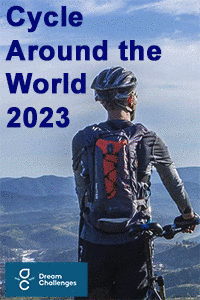Positive Health Online
Your Country

Research: O'KEEFE and COLLEAGUES,
Listed in Issue 307
Abstract
O'KEEFE and COLLEAGUES, (1)Saint Luke's Mid America Heart Institute, University of Missouri-Kansas City (J.H.O., E.L.O.); (2)Fatty Acid Research Institute (N.L.T., W.S.H., A.S.-V., J.W.), Sioux Falls, SD. (3)University of South Dakota (W.S.H.), Sioux Falls, SD. (4)Hospital del Mar Medical Research Institute, Barcelona, Spain (A.S.-V., I.L.).(5)The University of Newcastle, School of Biomedical Sciences and Pharmacy, Callaghan, Australia (J. Attia, G.M.G., A.H.). (6)Department of Cardiology, Aalborg University Hospital, Denmark (C.S.B.).(7)Department of Clinical Medicine (E.B.S.), Aalborg University Hospital, Denmark.(8)Department of Clinical Biochemistry (S.K.V.), Aalborg University Hospital, Denmark.(9)National Taiwan University, Institute of Epidemiology and Preventive Medicine, Taipei (K.-L.C.). (10)Department of Medical Research, Taichung Veterans General Hospital, Taiwan (Y.-Y.C.).(11)Institute of Nutrition and Food Sciences and Nutritional Physiology, University of Bonn, Germany (S.E.).(12)Dalarna University, School of Health and Welfare, Falun, Sweden (T.R.F.).(13)Division of Family Medicine and Primary Care, Department of Neurobiology Care Sciences and Society, Karolinska Institutet, Solna, Sweden (J. Ärnlöv). (14)Department of Medical Sciences Cardiovascular Epidemiology, Uppsala University, Sweden (L.L.). (15)MRC Epidemiology Unit, University of Cambridge School of Clinical Medicine, United Kingdom (N.G.F., F.I.).(16)Division of Human Nutrition and Health, Wageningen University and Research, the Netherlands (J.M.G., K.P.). (17)Institute of Public Health and Clinical Nutrition (V.d.M.L., W.M.U., J.T., M.A.L., J.V.), School of Medicine, University of Eastern Finland, Kuopio, Finland. (18)Department of Internal Medicine (M.L.), School of Medicine, University of Eastern Finland, Kuopio, Finland. (19)CHU de Québec-Université Laval and VITAM Research Centers, Centre d'Excellence sur le Vieillissement de Québec, Canada (D.L., P.-H.C.). (20)School of Epidemiology and Public Health, University of Ottawa, Canada (J.L.). (21)Karolinska Institutet, Institute of Environmental Medicine, Unit of Cardiovascular and Nutritional Epidemiology, Stockholm, Sweden (K.L., F.L.). (22)Cardiovascular Health Research Unit (B.R.S.), University of Washington, Seattle. (23)Departments of Neurology and Epidemiology (W.T.L.), University of Washington, Seattle. (24)Department of Medicine, Harvard Medical School, Brigham and Women's Hospital, Boston, MA (J.E.M., S.M., N.R.C.). (25)The George Institute for Global Health, University of New South Wales, Newtown, Australia (M.M.). (26)Department of Epidemiology, Johns Hopkins Bloomberg School of Public Health, Baltimore, MD (M.M.). (27)Department of Public Health and Caring Sciences, Uppsala University, Sweden (M.M.). (28)Glenn Biggs Institute for Alzheimer's and Neurodegenerative Diseases, University of Texas, San Antonio (D.M.v.L.). (29)Cancer Control Research, British Columbia Cancer, School of Population and Public Health, University of British Columbia, Vancouver, Canada (R.M.).(30)Icelandic Heart Institute, Kopavogur, Iceland (V.G.). (31)Department of Epidemiology and Public Health and Center for Cohort Studies, Kyushu University, Fukouka, Japan (T.N., Y.H.).(32)Harvard Medical School, T.H. Chan School of Public Health and Beth Deaconess Medical Center, Boston, MA (F.Q.).(33)Harvard Medical School, T.H. Chan School of Public Health and Channing Division of Network Medicine Brigham and Women's Hospital, Boston, MA (Q.S., F.H.).(34)USDA Human Nutrition Research Center on Aging, Tufts University, Boston, MA (A.V.A.K.).(35)Department of Public Health and Caring Sciences Clinical Nutrition and Metabolism Unit, Uppsala University, Sweden (U.R.).(36)Bordeaux Population Health Research Centre, University of Bordeaux, France (C.S., M.L.G., C.H.). (37)Department of Epidemiology, University Medical Center Rotterdam, the Netherlands (M.S., T.V., M.K.I.). (38)National Institutes of Health, National Institute on Aging, Longitudinal Studies Section, Baltimore, MD (T.T., L.F.). (39)Tata Medical Center, Kolkata, India (J.K.D.).(40)Azienda Sanitaria Firenze, Geriatric Unit, Florence, Italy (S.B.).(41)Department of Laboratory Medicine and Pathology, University of Minnesota, Minneapolis (M.T.). (42)Division of Biostatistics, University of Minnesota, Minneapolis (W.G.).(43)Department of Medicine, Cardiology, University of Southern California, Los Angeles (P.G.).(44)National Institute for Public Health and the Environment Bilthoven, the Netherlands (W.M.M.V.). (45)Julius Center for Health Sciences and Primary Care and Centre for Nutrition, Prevention and Health Services, Utrecht, the Netherlands (W.M.M.V.).(46)National Institute for Public Health and the Environment Bilthoven, the Netherlands (J.M.A.B., A.B.). (47)Departments of Neurodegenerative Diseases and Geriatric Psychiatry and German Center for Neurodegenerative Diseases, University Hospital, Bonn, Germany (M.W.). (48)University of Denver, CO (L.A.).(49)Department of Public Health Medicine, University of Tsukubu, Japan (K.Y.).(50)Department of Epidemiology, New York Academy of Medicine (D.S.S.). (51)Department of Medicine, University of Washington, Seattle (R.N.L.).(52)Division of Cardiology, Tufts University, Boston, MA (D.M.) investigated the associations between circulating and tissue omega-3 PUFA levels and incident stroke (total, ischemic, and hemorrhagic) in 29 international prospective cohorts
Background
The effect of marine omega-3 PUFAs on risk of stroke remains unclear.
Methodology
We investigated the associations between circulating and tissue omega-3 PUFA levels and incident stroke (total, ischemic, and hemorrhagic) in 29 international prospective cohorts. Each site conducted a de novo individual-level analysis using a prespecified analytical protocol with defined exposures, covariates, analytical methods, and outcomes; the harmonized data from the studies were then centrally pooled. Multivariable-adjusted HRs and 95% CIs across omega-3 PUFA quintiles were computed for each stroke outcome.
Results
Among 183 291 study participants, there were 10,561 total strokes, 8220 ischemic strokes, and 1142 hemorrhagic strokes recorded over a median of 14.3 years follow-up. For eicosapentaenoic acid, comparing quintile 5 (Q5, highest) with quintile 1 (Q1, lowest), total stroke incidence was 17% lower (HR, 0.83 [CI, 0.76-0.91]; P<0.0001), and ischemic stroke was 18% lower (HR, 0.82 [CI, 0.74-0.91]; P<0.0001). For docosahexaenoic acid, comparing Q5 with Q1, there was a 12% lower incidence of total stroke (HR, 0.88 [CI, 0.81-0.96]; P=0.0001) and a 14% lower incidence of ischemic stroke (HR, 0.86 [CI, 0.78-0.95]; P=0.0001). Neither eicosapentaenoic acid nor docosahexaenoic acid was associated with a risk for hemorrhagic stroke. These associations were not modified by either baseline history of AF or prevalent CVD.
Conclusion
Higher omega-3 PUFA levels are associated with lower risks of total and ischemic stroke but have no association with hemorrhagic stroke. Conflict of interest statement: Disclosures Dr O’Keefe reports major ownership interest in Cardiotabs. Dr Harris reports minor ownership interest in Omegaquant Analytics, LLC. Dr Sala-Vila reports travel and grant support from California Walnut Commission. Dr Mora reports compensation for consultant services from Quest Diagnostics. Dr Murphy reports compensation from Pharmavite for consultant services. Dr Bork reports grants from Karen Elise Jensens Fond. Dr Ärnlöv reports compensation from Astellas Pharma for other services; compensation from Boehringer Ingelheim for consultant services; compensation from AstraZeneca for other services; and compensation from Novartis for other services. Dr Geleijnse reports grants from National Institutes of Health to other; grants from Upfield Europe BV to other; and grants from The Dutch Heart Foundation to other. Dr Manson reports grants from National Institutes of Health and compensation from National Institutes of Health for other services. Dr Mora reports compensation from Pfizer for consultant services; employment by Brigham and Women’s Hospital; grants from National Institute of Diabetes and Digestive and Kidney Diseases; and grants from National Heart, Lung, and Blood Institute. Dr Melo van Lent reports grants from National Institutes of Health and grants from Alzheimer’s Association. Dr Mozaffarian reports grants from Rockefeller Foundation; compensation from Beren Therapeutics for other services; stock holdings in HumanCo; compensation from January Inc. for other services; compensation from Filtricine for other services; compensation from Perfect Day for other services; compensation from Tiny Organics for other services; grants from Bill and Melinda Gates Foundation; compensation from Calibrate for other services; grants from Vail Innovative Global Research; grants from Kaiser Permanente Fund at East Bay Community Foundation; compensation from DayTwo for other services; compensation from Instacart health for other services; compensation from Season Health for other services; grants from National Institutes of Health; compensation from Barilla for consultant services; stock holdings in Calibrate; compensation from Kaiser Permanente Fund for other services; compensation from HumanCo for other services
References
O'Keefe JH(1), Tintle NL(2), Harris WS(2)(3), O'Keefe EL(1), Sala-Vila A(2)(4), Attia J(5), Garg GM(5), Hure A(5), Bork CS(6), Schmidt EB(7), Venø SK(8), Chien KL(9), Chen YA(10), Egert S(11), Feldreich TR(12), Ärnlöv J(13), Lind L(14), Forouhi NG(15), Geleijnse JM(16), Pertiwi K(16), Imamura F(15), de Mello Laaksonen V(17), Uusitupa WM(17), Tuomilehto J(17), Laakso M(18), Lankinen MA(17), Laurin D(19), Carmichael PH(19), Lindsay J(20), Leander K(21), Laguzzi F(21), Swenson BR(22), Longstreth WT(23), Manson JE(24), Mora S(24), Cook NR(24), Marklund M(25)(26)(27), Melo van Lent D(28), Murphy R(29), Gudnason V(30), Ninomiya T(31), Hirakawa Y(31), Qian F(32), Sun Q(33), Hu F(33), Ardisson Korat AV(34), Risérus U(35), Lázaro I(4), Samieri C(36), Le Goff M(36), Helmer C(36), Steur M(37), Voortman T(37), Ikram MK(37), Tanaka T(38), Das JK(39), Ferrucci L(38), Bandinelli S(40), Tsai M(41), Guan W(42), Garg P(43), Verschuren WMM(44)(45), Boer JMA(46), Biokstra A(46), Virtanen J(17), Wagner M(47), Westra J(2), Albuisson L(48), Yamagishi K(49), Siscovick DS(50), Lemaitre RN(51), Mozaffarian D(52). Omega-3 Blood Levels and Stroke Risk: A Pooled and Harmonized Analysis of 183 291 Participants From 29 Prospective Studies. Stroke; 55(1):50-58. https://doi.org/10.1161/STROKEAHA.123.0442 Epub 2023 Dec 22. Jan 2024. Erratum in Stroke ;55(3):e109. https://doi.org/10.1161/STR.000000000000046 https://www.ahajournals.org/doi/10.1161/STR.0000000000000461 Mar 2024.



